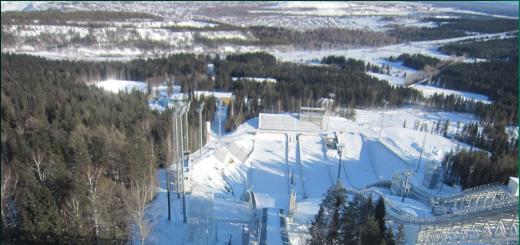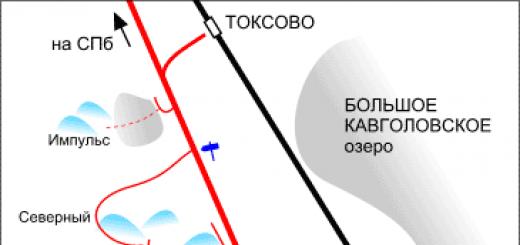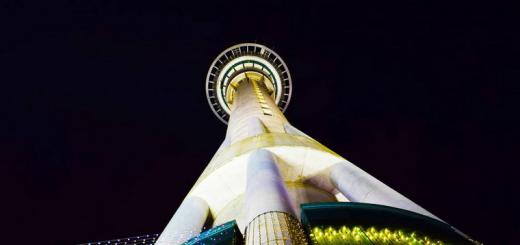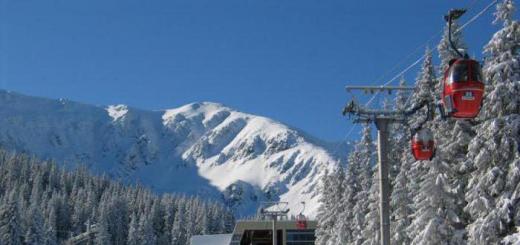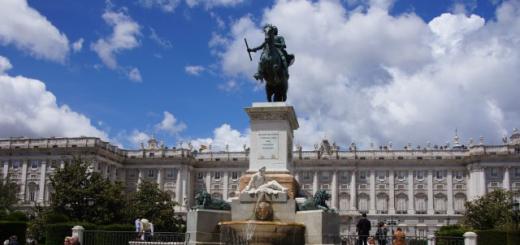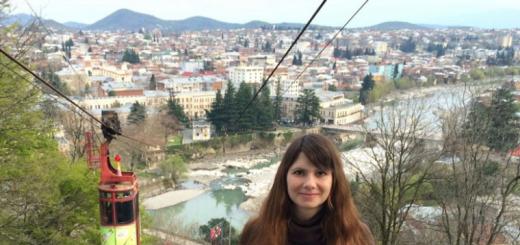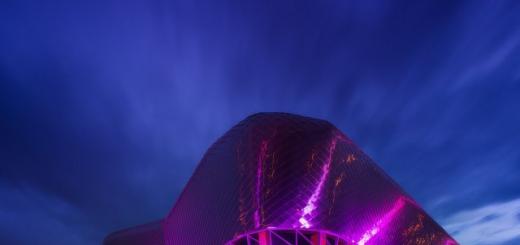Kizhi Island is unique in every way. It is a museum under open air- a monument to Russian wooden architecture in Karelia. He gave the name to the reserve, which in translation from Veps means “moss growing at the bottom of a reservoir, lake”.
In Zaonezhie it is called "Kizhi" with an emphasis on the first syllable
Therefore, going on a trip, and before getting to the island, it is worth learning the correct pronunciation of the name of this amazing place.
Kizhi Island on the map includes the territory of the Kizhi Pogost, from which the formation of the museum began: back in 1945 it was declared state reserve... On its basis, since 1966, the State Historical and Architectural Building has been operating, conditionally divided into sectors:
- Russians of Zaonezhie.
- Fossa.
- Vasilyevo.
- Vepsians.
- Pryazha Karelians.
- Pudozhsky.
- Petrozavodsk.
- Kizhi necklace.
- Kondopozhsky.
- Northern Karelians.
In the place where the island of Kizhi is located, its own unwritten laws of harmony, peace and silence reign

Tourists in each of the sectors can see, in addition to the buildings that existed on the island, many residential houses, chapels, ancillary and outbuildings brought from various regions of Karelia and the Russian North corresponding to the name of the sector.
An interesting fact is that since 1990 UNESCO has added the Kizhi Pogost to the World Heritage List.
In 1993, the architectural collection of the museum was included in the collection of especially valuable objects of the state.

The history of which began in the last century is a unique reserve. The graceful, with openwork domes and crowns, Church of the Transfiguration of the Lord is especially loved by pilgrims.
It is about her that beautiful legend, which tells about the master who managed to build a building without a single nail, only with the help of an ax

At the end of the work, the carpenter threw the tool into the lake so that no one could repeat his unique creation
The legend is indeed beautiful, but on the island, in addition to the Church of the Transfiguration, you can see a huge number of other, no less beautiful, architectural monuments.
The island of Kizhi, the photo of which does not convey the real impression of the stunning architecture, has brought together many buildings that have survived in their original form. Them:
- Disassembled carefully.
- They were carefully transported.
- Installed in a new location in an open-air museum.
In different sectors of Kizhi you can admire buildings with different purposes. There are dwelling houses, sheds, baths, beautiful churches and chapels here.
For example, in the Vasilyevo sector, you should pay attention to the Assumption Chapel, and in the Pryazhinsky Karelians, be sure to inspect Yakovlev's house
Unique buildings are located in scenic spots, their reflections in the water allow photographers to create images of rare beauty

You can, and bring hundreds of amazing photos with you.
Kizhi Island is equally beautiful in winter and summer. True, from the moment of freeze-up it is more difficult to get there, but the weather from spring to autumn provides tourists with the opportunity to enjoy the contemplation of rare and unique monuments of wooden architecture.

Be sure to visit Kizhi: a trip with Sharm Travel guarantees you a lot of aesthetic pleasure. Take your children with you and invite friends - joint trips around the most interesting places Karelia is not forgotten.
Information about Kizhi: how to get there, what to see
How to get to Kizhi island? The map states that the distance between St. Petersburg and the reserve is almost 356 km. But, since we are talking about visiting an island in the North of Russia, the path can be conditionally divided into a trip by land and water.
It takes almost 7 hours to get to Petrozavodsk from St. Petersburg

In a comfortable Sharm Travel bus and in the company of experienced guides, you will not notice how you will find yourself on the banks of the beautiful Onega. And the distance of 55 km to the island on the "Meteor" you will cover in a little over an hour: use this time for filming from the water. The unique views that open before the eyes of tourists are worthy of the most exquisite epithets, but you need to see such beauty with your own eyes.
Whichever season you choose to visit the unique open-air museum, with "Sharm Travel" you will be guaranteed the success of the enterprise.

The island of Kizhi, Karelia and its attractions are waiting for you: Akhvenkos waterfalls, Marble canyon. If you are lucky, you will hear the sounds of the churches in Kizhi, incredible in their purity.
Tourists are accompanied by experienced guides, travels take place in comfortable buses, and the program is drawn up taking into account the topic of the trip and the audience. Join us, all information about the tour to the Kizhi island can be obtained on the Sharm Travel website. The reserve is waiting for guests, and everyone is ready to open their own age-old secret and give a few hours of aesthetic pleasure.
I continue my story about a recent trip to Karelia. The first part I was devoted to the sights of Petrozavodsk, in the same I will move on to the story about Kizhi. Yes, what Russian has not heard of Kizhi! But not all were there.
The Kizhi Open Air Museum is located on an island in Lake Onega. High-speed hydrofoils take tourists there from Petrozavodsk. The journey takes 1 hour and 15 minutes. This pleasure is worth (there and back) - 1950 rubles. And I also thought that trains in New Zealand are expensive ...
Bearing in mind that there were always some problems with these ships, which were expressed in the chronic lack of tickets, I specially timed the trip to the Estonian public holiday August 20, which this year fell on Thursday, and the next day he took a day off in such a way as to be in Petrozavodsk on Friday, i.e. on a weekday.
The large river station in Petrozavodsk does not work; tickets for motor ships are sold in a small booth at the pier. I came almost to the opening itself, at about 8 in the morning, but the nearest time, for which they offered me tickets, was only at 14:15. Tellingly, there was no such time in the Meteor's schedule. Well, then it will be time to walk around the city.
At the appointed time, I was at the pier. At the same time, there were not very many people, many seats in the "Meteor" remained free, and this despite the fact that all day in the booth they were offering tickets for this particular time. I wonder where did all the tickets for 11:30 and 12:15 go?
A few words about the "Meteor" itself. Its interior, apparently, has not changed since Soviet times. The foam chairs were so squeezed that they had to sit on practically bare metal tubes. However, the toilet was quite decent :)
"Meteor" on the background of the embankment of Petrozavodsk
There are no open decks on the Meteora, but in the middle of the cabin there was a smoking area, from which one could lean out with a camera and photograph something of the landscapes that passed by. It was from here that I managed to photograph the Kizhi churchyard before we moored to the island.
Yes, and with the help of iGo on my smartphone, I was able to measure the average speed of the "Meteor" - somewhere around 57 km / h.
River pier in Kizhi
So, let's read for a start what the guidebook "Russian North" from the publishing house Polyglot writes about Kizhi, which I bought the day before in the House of Military Books on Nevsky:
Kizhi Island (length 7 km, width - from 1.5 to 0.5 km) is located in the south of the Zaonezhsky peninsula among a picturesque cluster of islands called the Kizhi skerries. For a long time, the island was covered not by forests, but by arable land and hayfields. The Kizhi skerries and the south of Zaonezhye have been inhabited from time immemorial, as evidenced by numerous archaeological sites dating back to the Middle and Late Stone Age. About 9-6.5 thousand years ago, tribes belonging to the eastern branch of the Caucasians lived here, and those who came here in the X century. Novgorodians met with the Sami population and all. The name of the island comes from the language of the Karelian people - the word kiza meant “play, fun, dance”, so “Kizhi” can be translated as “island of merrymaking” or “fun”. By the time these lands were transferred to the Moscow State in 1478, the population was already Russian, although the culture of Zaonezhie was distinguished by its unique originality, representing a fusion of Slavic and Finnish cultures, while locals clearly recognized themselves as descendants of the Novgorodians up to the beginning. XX century. In Zaonezhye, for centuries, ancient Russian legends and epics were preserved and passed down orally from generation to generation, and at the same time, wooden architecture and folk crafts were actively developing. Kizhi. Postcard The island of Kizhi has traditionally been the center of the villages of the Southern Zaonezhie and Unitskaya Bay - the Spaso-Kizhi churchyard, a district that included about 180 villages, their description is first found in the Scripture Book of Andrei Pleshcheev for 1582-1583, and 20 years later, “115 villages living and 88 abandoned. " The Kizhi Pogost united the neighboring peasants until the 30s. XX century. During the Time of Troubles, the churchyard was ravaged by the Swedes and the Polish-Lithuanian troops, therefore, after the signing of peace with Sweden, a fortress was cut down around the Kizhi churchyard to protect it from attacks. The threat of foreign intervention weakened only with the onset of the Peter the Great era and the victory in the Northern War. In the beginning. XVIII century the peasants of the Kizhi Pogost are attributed to the new ironworks, where they had to work out on account of taxes, which ruined even strong farms. On the second. floor. XVIII century a wave of riots swept through Zaonezhia after the tsar's decree on increasing taxes. The famous Kizhi uprising of 1769-1771 was shot by government troops. It is believed that the most beautiful Assumption Church in Kondopoga was a kind of monument to the victims of the massacre of the rebels. During the Second World War, Zaonezhie was under the Finnish occupation for about three years, but already in 1945 the Kizhi Pogost was declared a state reserve, in 1951 the first architectural monument, the house of the peasant Oshevnev, was transported to the island. In 1990, the architectural ensemble of the Kizhi Pogost was included in the UNESCO List of World Cultural Heritage Sites. Now in the Historical, Architectural and Ethnographic Museum-Reserve "Kizhi", which occupies an area of about 10 thousand hectares, there are 87 monuments of traditional folk architecture of the XIV-XX centuries, including the ensemble of the Kizhi Pogost, 26 unique archaeological sites, more than ten historical settlements the territory of the Kizhi volost. The museum is annually visited by about 170 thousand tourists from Russia and abroad.
(in fact, the distance between buildings is much greater)
kizhi.karelia.ru
The core of the collection architectural monuments Museum-reserve, its semantic center is the temple ensemble of the Kizhi churchyard (XVIII-XIX centuries), consisting of the 22-head Church of the Transfiguration, the nine-domed Pokrovskaya church, a tent bell tower and a chopped log fence.
Kizhi churchyard
Church of the Transfiguration of the Lord (1714) - the most famous building Kizhei. The names of the creators are unknown, and the beautiful legend about the master Nestor, who, having finished his work, threw an ax into the lake with the words “there was no such church and there will not be”, is very widespread in the North in relation to many monuments of wooden architecture. Another common opinion that it was cut down without a single nail is also not very reliable - an aspen ploughshare (scales covering the heads) is attached to the domes with the help of small nails.
The height of the church is 37 m, the basis of the structure is an octagon with four cuttings, such structures are called "twenty-two walls". On the figure eight there are two more, smaller ones. The chapters vary in size from tier to tier in order to avoid monotony and create a kind of rhythmic pattern. The system of protection of the building from decay is no less well thought out, even decorative elements are often used to drain water and proper ventilation of the air. Inside the temple, the vertical volume was covered with a sixteen-sided ceiling - the "sky", lost during the war, the carved iconostasis (1770) has been preserved. It is made up of 104 icons, the oldest of which, typical of the northern school of icon painting, date back to the end of the 17th century.
Church of the Transfiguration
The Church of the Transfiguration, a perfect work of Zaonezh masters, is a kind of "swan song" of Russian wooden architecture, which reached the peak of its development at that time. It was built as a "cold" summer temple, and next to it, half a century later, a "warm" church of the Intercession of the Mother of God was erected (1764). The builders managed to create a piece that was a harmonious part of the ensemble, and not just a separate building. In the Church of the Intercession, one can see the initial "subordination" to the dominant Transfiguration Church - a powerful octagon on a quad, which could carry a huge tent, crowned with a modest nine dome with small, graceful domes; the silhouette expanding upward emphasizes the upward-directed pyramid of the main building of the ensemble. However, some researchers believe that the Intercession Church was originally built as a tent-roofed one. Currently, a four-tiered tyablo iconostasis with 44 icons of the 17th-19th centuries has been restored. In the hallway there is an exhibition “History of the Kizhi Orthodox Parish”.
The bell tower of the Kizhi Pogost (1863) was being built at a time when Russian wooden architecture was in decline, and yet, despite the seeming simplicity and details alien to traditions, the building surprisingly harmoniously merged into the ensemble. The scheme is traditional - an octal on a four. The heavy, two-thirds of the log-house height, the quadruple surprises the connoisseurs of cult wooden buildings with its disproportion, however, you can see that it is raised exactly to the height of the riverside of the Preobrazhensky Church and the height of the quadruple of the Intercession Church, which once again emphasizes the unity of the three buildings. At present, a remote control for the bell ringer is installed in the bell tower of the Kizhi churchyard. The pendant on the console contains 12 bells (9 old and 3 modern).
Church of the Transfiguration of the Lord, the bell tower and the Church of the Intercession of the Virgin
By the middle of the XX century. only a stone ridge remained from the fence of the churchyard. The appearance of the original fence was restored by restorers from the engravings of the 18th century. in the book by N. Ozeretskovsky "Traveling on lakes Ladoga and Onega". The reconstruction project was based on the preserved fence of the Vodlozersky-Ilyinsky churchyard, as well as the Pochezersky churchyard in the Arkhangelsk region. The modern fence is a high stone embankment, on which a wall of powerful logs tied with ribbons is laid. On top of the wall there is a gable plank roof. On the western corner of the fence there is a small turret covered with a hipped roof - epancha. From the north and east to the churchyard there are gates with openwork door leaves. Central entrance to west wall bounded on both sides by two log cabins under a common roof. The log fence was reconstructed by the architect A. Opolovnikov in 1959.
Church of the Resurrection of Lazarus
Another of the main attractions of the museum-reserve is the Church of the Resurrection of Lazarus, brought from the Murom monastery, from the eastern shore of Lake Onega. This small cage church has given rise to many legends among believers and hypotheses among scientists. The dating of the temple has been a subject of controversy for almost a century. For the first time, the church was mentioned in the will of the Byzantine monk, founder of the Murom monastery, Lazar of Murom, who died in 1391, but the document of the Olonets spiritual consistory speaks of it rather controversially: “... in the name of the Monk Lazar, the cemetery was built in 7086. from the World (1578), wooden, built by the founder of this monastery, the Monk Lazarus. " The analysis of architectural details does not clarify this issue. The church has preserved an iconostasis consisting of 17 icons of the 16th-15th centuries. It is the oldest type of two-tier iconostasis, consisting of a local and a deesis row, including the royal gates and the northern Ponomar doors.
House of the peasant Oshevnev
Not far from the Kizhi churchyard there is an architectural and ethnographic complex "Russian Zaonezhia". The exposition "village" began in 1951-1959. from the House of Peasant N. Oshevnev brought from Bolshoy Klimenetsky Island (1876). The building is built in the form of a "purse" - the yard-shed is adjacent to the side wall of the dwelling and is covered with a gable asymmetrical roof. The outbuilding included a barnyard, a hayloft and two storerooms. The residential part faces the lake and is richly decorated; it includes 2 huts, a hall, an upper room, a loft in the attic, a storage room and a vestibule. A house with a stove was called a hut, it is believed that the owners spent the winter in the hut on the first floor, and in the summer they settled throughout the house. Now the interiors of huts, a room, a barn, sheds have been restored in the house, ethnographic exhibitions are held in the hall. Along the second floor there is a gulbische - an open gallery, the windows of the side gables are decorated with balconies. Previously, window trims were painted orange-yellow, and the eaves of the roof - in red, which greatly enlivened appearance at home.
In addition to the main house, the peasant estate is also detached outbuildings. Fires have always been the main disaster for the peasants, and the barns removed from the main house could save the most valuable things - grain and flour, and prevent them from starving to death. There are several outbuildings near Oshevnev's house: a two-storey barn from the village of Yuzhny Dvor (18th century), a barn from the village of Lipovitsy (early 20th century) and a bathhouse from the village of Mizhostrov (early 20th century).
House of the peasant Elizarov
The house of the peasant Elizarov (late 19th century) from the village of Potanevshchina is somewhat smaller. The interiors of both buildings are similar, but unlike Oshevnev's house, Elizarov's house was heated in black. This method of heating the room was in many ways more convenient for peasant families - less firewood was consumed, the woodworm beetle did not start, and it was warmer in the hut. Smoke collected above the Vorontsov shelves, and the walls below this level and ceilings were thoroughly washed and scrubbed every week. Elizarov's house is one-story, it is made of powerful logs and is modestly decorated, although the side balconies and "gulbische" are present here as well. In the utility room there is an exhibition telling about the secrets of creating the “kizhanka” boat. On the shore near the house there is a bathhouse (early XX century) from the village of Ust-Yandoma.
A little further south of the Kizhi churchyard is the most modest House of Shchepin (1907). The type of construction here is “timber”, when living quarters and utility rooms are stretched out in a line under one roof. In the interior you can see items related to the cooper's craft (making barrels, buckets, jugs and other wooden utensils).
Windmill
The exposition sector "Russian Zaonezhya" also includes a water mill (1875) from Berezovaya Selga, a windmill (1928-1929) from Nasonovshchina and a chapel of the Archangel Michael (early 18th century) from the village of Lelikozero.
Chapel of the Archangel Michael
The Kletskaya chapel of the Archangel Michael belongs to the common type of northern chapels. This is a three-part log house, consisting of a vestibule, a refectory and the chapel itself. The building is richly decorated with carved elements, a two-tiered iconostasis with icons of local writing and a "sky" - a painted ceiling of 12 segments, has been preserved in it. The House of Sergeev (1908-1910) and a smithy (early XX century) from the village of Suisar were brought to Kizhi from the western shore of Lake Onega.
House of the peasant Sergeev
In the central part of the island there are two historical villages: Yamka, mentioned for the first time in 1563, on the east bank, and Vasilyevo, mentioned in 1582, on the west. In these villages, buildings have survived, which are now included in the museum fund, many architectural monuments were brought from other places in Zaonezhie: peasant houses, stables, barns and barns. Near the village of Yamka, the chapel of the Savior Not Made by Hands (XVII-XVIII centuries) from the village of Vigovo has survived, and the architectural dominant of Vasilyevo is the local chapel of the Assumption of the Mother of God (XVII-XVIII centuries), which is the oldest building on the island of Kizhi.
House of the peasant Yakovlev
Three large peasant houses and several outbuildings make up the exposition sector of the Russian Pudozhia, where the architecture of the inhabitants of the eastern shore of Lake Onega is presented, and even further north you can see houses characteristic of the Karelians and Vepsians. The Karelian estate is represented here by the house of the peasant Yakovlev (1980-1990s) from the village of Klescheila, by a bowing cross and barns, and among the monuments of northern Karelians and Karelian people there is an interesting chapel of Three Saints from the village of Kavgora (second half of the 18th century) ... Two barns and a bathhouse make up the outbuildings of the Vepsians.
Visitors are introduced to the monuments of the island by the routes offered by the museum's excursion service. Recently, an "Ecological trail" was laid, which gives an idea of the nature of the island, an interactive family route to the Yakovlev house has been developed, where you can take part in traditional peasant household processes. During museum holidays, a folklore ensemble often performs.
On the territory of the museum there are several cafes and trade kiosks, living rooms. You can also ask for an overnight stay in the villages to the local residents.
Postcard. Kizhi from a bird's eye view
A few words about how the exhibits of the museum are located. Most of them are located in a small area, in the part of the island that is south of the pier. Those three hours that are allotted for the excursion are quite enough for a leisurely inspection. But the villages of Yamka, Vasilyevo and all other buildings that are from the pier to the north are not included in the usual excursion. How to get to them is not entirely clear. On the road I noticed a bus, but while I was thinking, he left. Perhaps it was just intended to move around the island. Walking here on foot is rather tiresome. But I still had almost an hour before the departure of the ship, and I still went to that part of the island that is not included in the official route. I got to the windmill that stands there on a hillock, at the same time looked at the village of Yamka and at the chapel of the Savior Not Made by Hands, which rose in the distance. But he did not go to the village of Vasilyevo, he was afraid to be late. I wonder if there is no bike rental here?
One more windmill... The chapel of the Savior Not Made by Hands is visible on the left.
The question also remained unclear whether it is possible to come here on one motor ship and leave on the next. The fact is that when boarding, everyone is given badges around their necks, and when selling a ticket, they also ask for a phone number. All this is being done, apparently, so that people do not get lost on the island, do not lag behind their ship and do not disrupt the well-oiled conveyor for serving tourists.
View of the nose of the "Meteor" and the Kizhi churchyard
Now let's summarize. Well, what can I say about Kizhi. In general, I liked the museum, although the expectations were certainly higher. The cost entrance ticket in 130 rubles for citizens of the Russian Federation (and equated to them, gygy :)) is quite sane. But 625 rubles for foreigners, or almost 15 euros, is already a bit too much. For that kind of money, even Western European museums have to turn around in front of their clients. And here everything is kept, one might say, on one exhibit - the 22-head of the Church of the Transfiguration of the Lord. Meanwhile, it is clearly not eternal, and the metal plates on its lopsided walls speak of this. Well, it is difficult in our climate for wooden buildings to stand for 300 years! When it collapses, what then? And then Kizhi will simply turn into "wabaikhumuuseum", of which the world is full.
I wonder if now there are no craftsmen who could build something like that? Is it really that difficult with modern technology? Take something old as a basis, make a project on a computer, carve logs to size and assemble. Of course, at first it will be a "remake", but all the old things were once a remake! And most of the local exhibits have been collected at the current place virtually from scratch. I think that in such a place, new buildings could fit into the overall ensemble. In a word, it is necessary to somehow develop the museum further, the world does not stand still!
18.01.2018
The Kizhi Museum-Reserve on the islands of the same name in Lake Onega is the most famous landmark of the Russian North, where wooden architectural monuments are collected (brought from different places). The pearl of the Kizhi churchyard is the Transfiguration Church with 22 domes. What kind Interesting Facts and the details can be told about Kizhi?
- The Kizhi Pogost is often called the central architectural ensemble of the island. The word "graveyard" in the 10th century denoted an administrative-territorial unit - part of a province, then passed to settlements with central functions, where there was a church and a cemetery, and from the 17th century later it began to designate only a rural cemetery, although it was preserved in the names of some settlements ...
- The unique architecture of the island became known in the middle of the 19th century, when the study of the northern provinces of Russia began.
- The beginning of the 20th century was a period of pilgrimage to Kizhi by creative people - architects and artists who strove to teach and capture the local beauty.
- The Kizhi Pogost acquired the status of a monument in 1920, and became a museum in 1966, after a long period of post-war restoration work and collection of exhibits on other islands.
- The restoration and reconstruction of many objects was required due to dilapidation, emergency condition and lost artistic elements - interior paintings.
- During the war, the monuments on the island were not damaged, since they were in the zone of the Finnish occupation, and Finland treated them very carefully, planning to include Kizhi into its territory and explore in detail.
- One of the Finnish veterans of that war told the legend that the churchyard was still going to be bombed, but seeing its beauty, the pilots dropped bombs into the lake. However, no written confirmation, such as orders to bomb the island, was found.
- Two churches and an 18th century bell tower - the most famous buildings on the island - are included in the list World heritage UNESCO since 1990.
- The walls and towers of the Transfiguration Cathedral (1714) were built without the use of nails, but when covering the domes with wooden "scales" (plowshares), they were still used.
- The plowshares of the temple are made of aspen - it is the wood of this species that shimmers and changes color in the sun.
- The body of the main temple was cut from pine only with the help of axes.
- In the 80s of the XX century, in order to preserve the monument, a metal frame was installed inside the Spaso-Preobrazhensky Cathedral. At the same time, he damaged part of the structures, roughly crashing into the logs, and the floor, the painted "sky" and the iconostasis of 102 icons were generally dismantled.
- The last restoration began in 2010, and in 2018 it is planned to finish it and allow visitors to enter the church.
- To restore the structural elements, the temple was lifted on jacks and divided into belts, which are removed and restored one by one so that the monument does not lose its integral external appearance.
- The Kizhi Pogost, headed by the Transfiguration Cathedral, is the visiting card of the island and the reserve. However, in total, the museum-reserve includes 10 sectors, and some are located on other islands, on " big earth”And even in Petrozavodsk.
- In addition to churches and chapels, the museum's exposition includes residential buildings, outbuildings, workshops, baths, mills, barns, barns, a smithy and even a wooden building of the Zemstvo hospital in Petrozavodsk.
- Despite the fact that in colloquial speech there are two variants of stress in the name - Kiz and and K and linguists and philologists (however, as well as local residents) argue that the second option with an emphasis on the first syllable is correct, i.e. TO and live.
At the present time, when the Kizhi Pogost finally fell into the hands of professional restorers. There is a hope that in the near future it will be possible to see the monument in its historical form with the restored interior decoration. It is planned to study it and improve the adjacent territory, although even without this, the unique monument attracts tourists from all over the world.
Since ancient times, wood and clay have been the main building materials for Russian architects. That is why wooden architecture became the basis for a unique style of Russian architecture, a distinctive feature of which was the optimal combination of functionality and beauty of buildings. One of these amazing masterpieces of Russian architecture is the ancient churchyard on the island of Kizhi.
The Kizhi Pogost is a world famous architectural ensemble located on the Kizhi island of Onega Lake.
The architectural ensemble of the ancient Kizhi churchyard consists of three structures:
- Transfiguration Church;
- Church of the Intercession;
- hipped bell tower with a belfry.
It is not known in what year the churches in Kizhi were built. It is believed that their construction was completed before 1583. However, there is a mention of them in the Scripture Book of 1563, which contains references to a description of the churches of 1496, which, unfortunately, has not survived to this day. Thus, it can be assumed that churches on the Kizhi Island have existed since the end of the 15th century.
The Transfiguration (summer) church is considered the pinnacle of Russian wooden architecture, the huge pyramidal volume of which is crowned with a very complex system of twenty-two scaly domes arranged in four tiers. The basis of the composition of the Church of the Transfiguration is the "octagon" - an octahedral frame with four two-stage cuts located on the cardinal points.
The Intercession (winter) church complements the Transfiguration church, echoing it with a kind of architectural echo. The corners of the Big Eight of the Intercession Church are crowned with eight small chapters, and the composition is completed by a large ninth chapter, located in the center of the building. All together, the domes form a light and delicate crown, permeated with air and light, but at the same time rather modest and absolutely not competing with the grandeur of the Church of the Transfiguration.
Outwardly dissimilar churches have quite a lot in common. Thus, the log cabins of churches are chopped in the traditions of Russian carpentry - without a single nail, with the exception of the domes, both monumental log cabins are a kind of pedestal for magnificent multi-domes.
A single architectural ensemble of churches of the Kizhi Pogost is harmoniously complemented by a hipped-roof bell tower with a belfry 30 meters high. The composition of the bell tower is designed in accordance with the traditional scheme typical for architectural ensemble in Kizhi, - octagon on four.
It took 160 years from the beginning of the construction of the structures in Kizhi to their unification into a single architectural ensemble. However, the creative searches of Russian architects were not crowned with success, therefore, further changes in the appearance of the architectural ensemble in Kizhi, associated with the restoration work, take place in modern times.
So, in 1945, the object received the status of an architectural reserve, and the government decided to restore the Kizhi churches, the main tasks of which were to strengthen the monuments and restore their original artistic appearance. In the course of the restoration work, the churches were freed from the later awkward stucco molding, thanks to which their original appearance was returned: the iron was removed from the domes of the Transfiguration Church, the plank sheathing, some of the crowns of the log cabins were replaced and the weakened structures were strengthened.
Today the museum of wooden architecture "Russian Zaonezhie" is located in Kizhi. Here you can see a large number of old fancifully decorated huts that created an entire village. Thus, the Kizhi Pogost ensemble is an illustration that conveys the past way of life.
Kizhi Historical and Architectural Museum-Reserve- a place that should be visited by people interested in history, lovers of Russian architecture and just those who want to take a break from the hustle and bustle big city... On the island of Kizhi you can see the architecture of the 18th-19th centuries, as well as get acquainted with the life of the inhabitants of Karelia of those times. A boat trip on Lake Onega and its picturesque shores will also be pleasant.
Location: contact information
How best to get to Petrozavodsk
- by plane- 1 hour 40 minutes by direct flight;
- by train- 12 hours (minimum travel time);
- by car- 1050 km through or about 1000 km through.
- by plane- 4 hours 15 minutes;
- by train- 7-8 hours;
- by car- 435-526 km.
Before can be reached by bus. Travel time will be the longest of all possible modes of transport, but you will be able to admire the picturesque surroundings.
From Petrozavodsk hydrofoil boats run to Kizhi Island in summer, and hovercraft in winter. You will also be offered options such as a pneumatic ATV, a snowmobile, and even skis and dog sleds.
Visiting the Kizhi nature reserve: opening hours, ticket prices, promotions and discounts
Working hours:
- May-August: 08.00-20.00;
- September-October: 09.00-16.00;
- November-February: 10.00-16.00;
- March-April: 09.00-17.00.
Without days off and lunch break.
Visit prices:Excursion prices (per person):
- group up to 5 people- 1000 rubles (in a foreign language - 2500 rubles);
- group of 5 people- 100 rubles (in a foreign language - 500 rubles).
There is also a mass of additional excursions and programs, theater performances and audio guides are provided. Choose the one you like additional service can be found on the site , by phone or at the excursion center.
On which lake is the Kizhi Museum-Reserve
The island of Kizhi, on which the reserve is located, is located in the northern part Lake Onega... At the end of the 18th century, the island was a separate Kizhi volost, which included 9 villages. In addition to traditional crafts, the inhabitants of the island were engaged in fishing and agriculture, which was facilitated by the rich fish waters of Lake Onega and the fertile soil of the island.
Sights of the Kizhi reserve
Historical reserve, founded in 1966 with the aim of preserving the architecture of Karelia in the 18th - early 20th centuries, it includes more than 70 objects, such as churches, bell towers, huts, barns, baths, mills and smithies. Among the most interesting architectural objects are the following:
- Church of the Transfiguration of the Lord. This is undoubtedly the main attraction of the reserve. The 37-meter temple was erected in 1714. This is one of the brightest representatives of the eightfold churches. The architectural composition is based on an octahedral log house, four two-stage cuts of which are located on the cardinal points. The roofs of octagons and cuttings are crowned with domes. 22 domes are arranged in such a way that the overall composition has a pyramidal shape. The basis of the interior of the temple is the majestic iconostasis of 102 icons arranged in four tiers. In 1949-1959, a large-scale restoration of the church was carried out, mainly affecting the interior and the iconostasis. IN this moment the reconstruction of the temple building itself is underway with the replacement of dilapidated logs with new ones.
- Church of the Intercession of the Virgin. This is one of the few multi-domed churches that have survived to this day. It was built in 1694 and rebuilt 70 years later. Tourists are attracted here not only by the front part, but also by the interior with a rich iconostasis, part of which, unfortunately, was irretrievably lost.
- The bell tower of the Kizhi Pogost. The 30-meter bell tower was erected in 1862. The bell tower offers a picturesque view of the island and Lake Onega.
- Windmill in the village of Volkostrov. 10 meter post windmill, built in 1928.
Interesting facts about the Kizhi Museum-Reserve
- During the restoration of the Transfiguration Church in 2014 year, when it was necessary to replace about 30% of the logs, the structure was lifted with vag- levers used 400 years ago.
- 4 architectural objects of the Kizhi reserve included in the list UNESCO World Heritage Sites.
Photo of the Kizhi Museum-Reserve
Church of the Transfiguration- the main attraction of the historical reserve.
Most of original icons in the iconostasis of the Church of the Intercession of the Virgin has survived to this day. 
Winter landscapes in the Kizhi nature reserve are no less picturesque. 
Mill in the village Volkostrov has a height of about 10 meters. 
The Kizhi nature reserve displays traditional life of the inhabitants of Karelia.
Museum reserve Kizhi - video
In this video there are even more interesting facts about the Kizhi Museum Reserve. Happy viewing!
Visiting the historical reserve Kizhi often included in the visit program... Tens of thousands of tourists from all over the world visited this unique cultural and historical object in the open air and discovered the traditional architecture and peculiarities of the life of the peoples. The popularity of the reserve among tourists is evidenced by at least the fact that tourist services are carried out here on eight foreign languages.
Therefore, we too should pay more attention to our history and cultural heritage... Moreover, there are really interesting excursions and tasting of Karelian dishes prepared according to ancient folk recipes. And a water trip on Lake Onega will not leave anyone indifferent.

